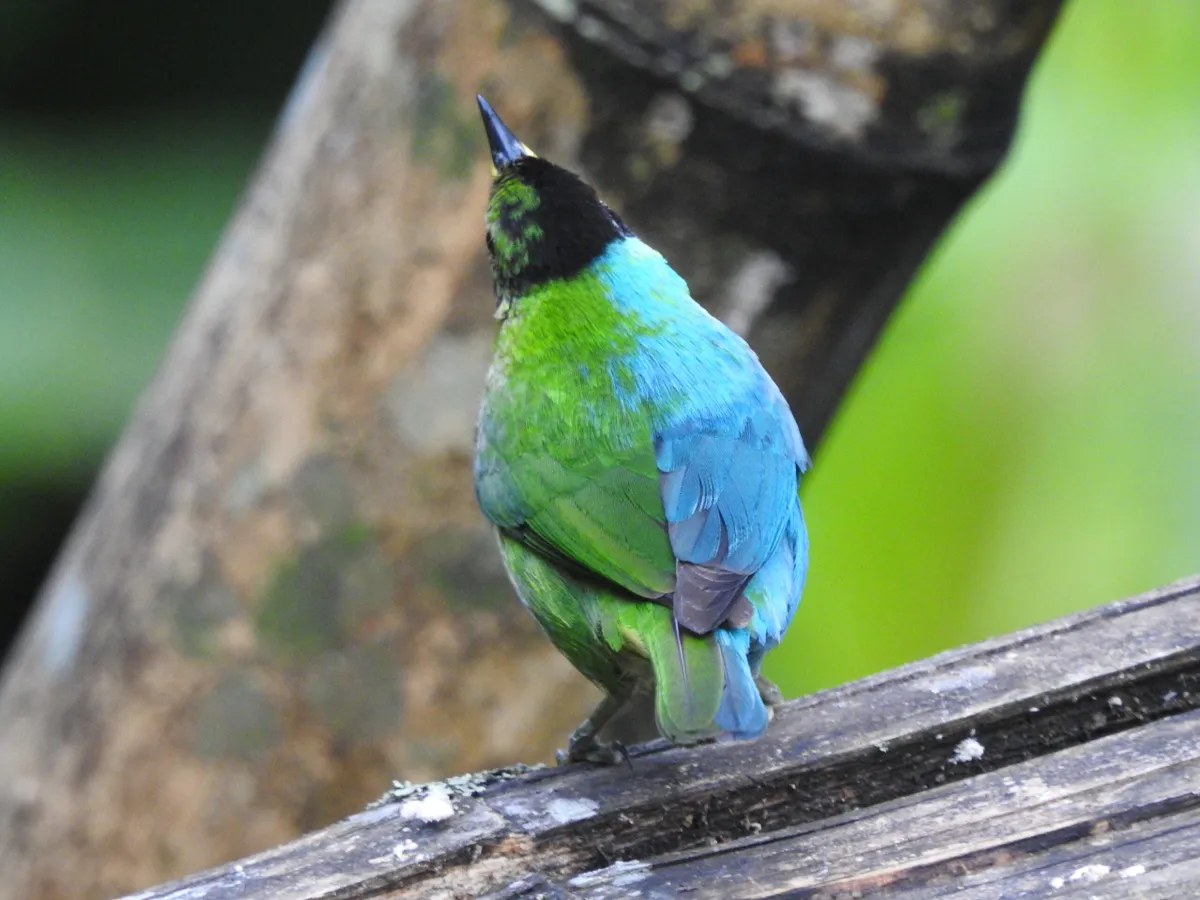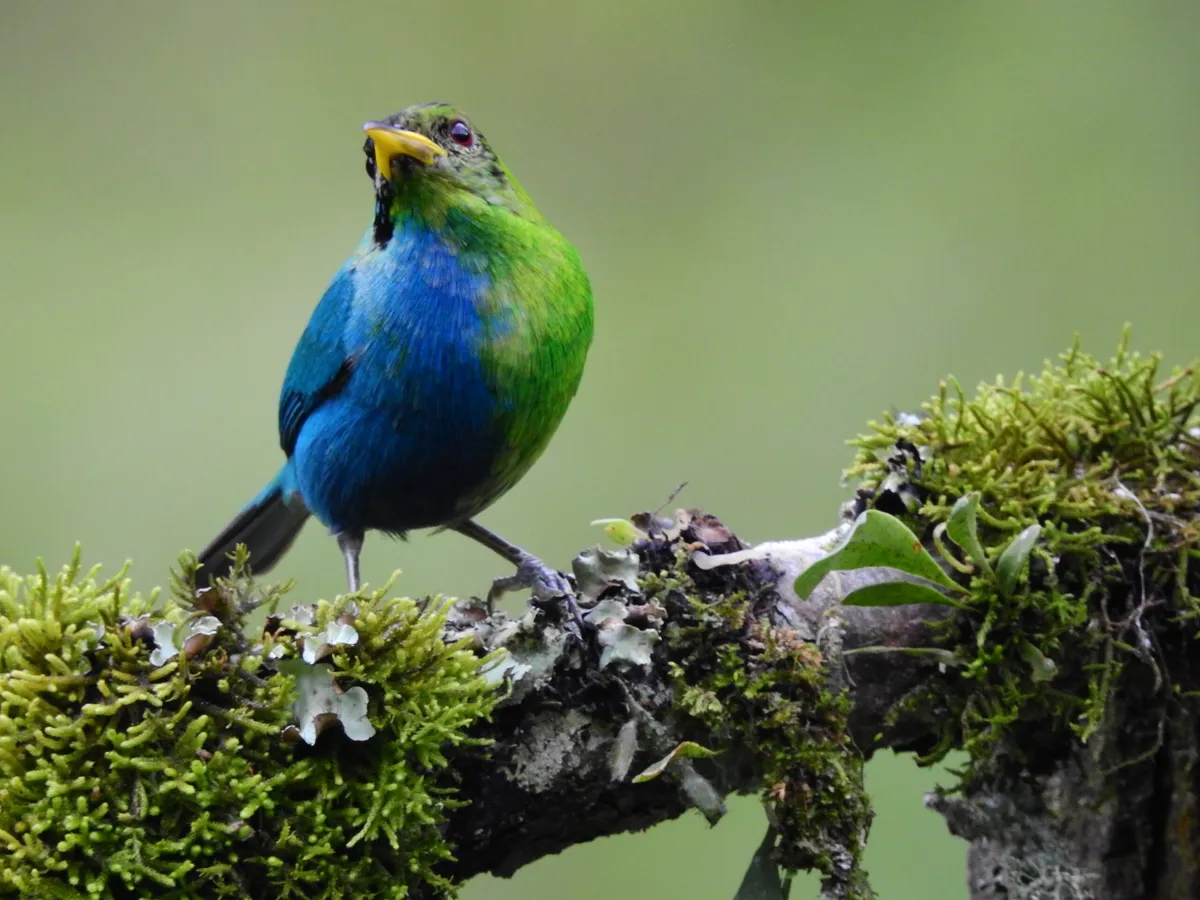An unusual green honeycreeper has been sighted at a reserve in Colombia exhibiting green (female) plumage on one side and blue (male) on the other. Whilst it sounds like an April Fool’s joke, or something that AI might generate, this is a condition known as bilateral gynandromorphy.
It is only the second documented case of bilateral gynandromorphy in this species, the opposite male and female sides than the first green honeycreeper gynandromorph, and the first for more than 100 years.
Bilateral gynandromorphism is believed to be caused when a female bird’s egg develops two nuclei, and is then fertilised by two different sperm, known as double fertilisation. The resulting offspring has female cells on one side of its body and male on the other. As well as the split in plumage, the bird also has an ovary on the female side and a teste on the male side, and could theoretically mate as either.
It is much easier to spot bilateral gynandromorphy in species that are sexually dimorphic – where the male and female look different.

First spotted in October 2021, with sightings continuing until June 2023, the bird was seen at a feeding station set up at the Reserva Natural Demostrativa Don Miguel in Colombia. The farm owner John Murillo spotted the bird and pointed it out to visiting birders, including Hamish Spencer from the Department of Zoology at the University of Otago in New Zealand.
“It was extremely exciting to see this bird,” says Spencer, who is a co-author on the paper published in the Journal of Field Ornithology in December 2023.
“Most birders are likely to go their whole lives and not see a gynandromorph, so I was very privileged to benefit from John’s discovery.”


